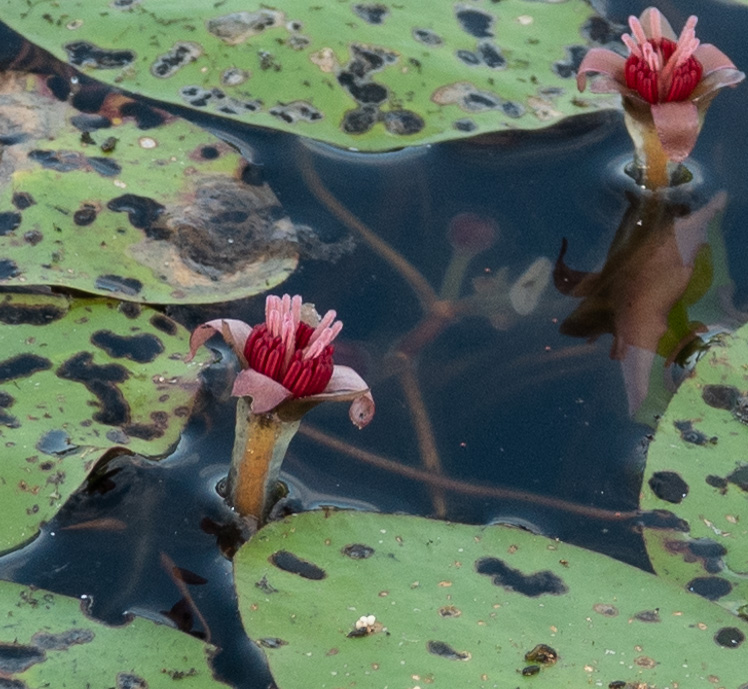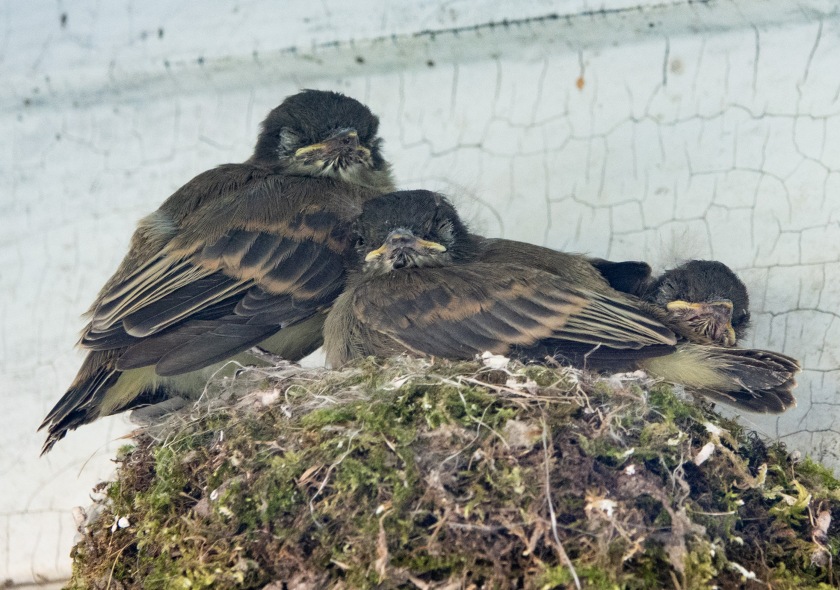I saw my first one of these orchids about 45 years ago, but still every time I can’t quite believe they really grow in our northern forests:

They are 6-12ninches tall, and each flower is up to two inches long. The pouch is a single petal, the labellum, grossly enlarged and modified. In the photo below, a tiny moth stretches out its minuscule proboscis towards the nectary, but it can’t quite reach.

The officially named Pink Lady’s Slipper Orchid, Cypripedium acaule, can sometimes be white instead:

The root of lady’s slipper was used as a remedy for nervousness, tooth pain, and muscle spasms, and as a sedative. These sound to me like traditional “women’s complaints”, and I wonder if there is an actual effective compound in the roots, or if it was all because of the lascivious shape of the flower, rather as some cultures believe that long rigid rhino horns ‘cure’ impotence. Does anyone know?
There is also a different yellow species, Cypripedium calceolus, which is even more spectacular:

The twisted side petals remind me of the payes sidelocks as worn below by Michael Aloni, star of Shtisel:

These yellow orchids do grow wild here, but I photographed these in the wildflower garden at Halls Pond Gardens in Paris, Maine (yes, really), and I’d like to dedicate this post to the memory of the delightful, modest and hugely knowledgable Mark Brandhorst, creator of the garden, who tragically died unexpectedly this spring. All these orchids are hard to grow, but he had the greenest of fingers.
P.S. Some more detailed information from the US Forest Service website, By Patricia J. Ruta McGhan:
” In order to survive and reproduce, pink lady’s slipper interacts with a fungus in the soil from the Rhizoctonia genus. Generally, orchid seeds do not have food supplies inside them like most other kinds of seeds. Pink lady’s slipper seeds require threads of the fungus to break open the seed and attach them to it. The fungus will pass on food and nutrients to the pink lady’s slipper seed. When the lady’s slipper plant is older and producing most of its own nutrients, the fungus will extract nutrients from the orchid roots. This mutually beneficial relationship between the orchid and the fungus is known as “symbiosis” and is typical of almost all orchid species.
Pink lady’s slipper takes many years to go from seed to mature plants. Seed-bearing harvest of wild lady’s slipper root is not considered sustainable. Pink lady’s slippers can live to be twenty years old or more.
Pink lady’s slippers also require bees for pollination. Bees are lured into the flower pouch through the front slit, attracted by the flower’s bright color and sweet scent. Once inside, the bees find no reward, and discover that they are trapped, with only one point of escape. Inside the pouch, there are hairs that lead to a pair of exit openings, one beneath each pollen mass. The bee must pass under the stigma, so if it bears any pollen from a visit to another flower, it will be deposited before picking up a fresh load on the way out.”




































